 Glycolic Peel
Glycolic PeelWhy Your Sun Care Routine Should Include Iron Oxide
Does your skin or sun care routine include visible light protection? We didn’t think so. Here’s how iron oxides can help.
We give so much necessary time and attention to the importance of protecting ourselves from the harmful effects of ultraviolet (UV) rays that it can be easy to gloss over the types of light we are exposed to on a daily basis. Chief among them: visible light. As such, it would be no surprise if you are new to the idea of iron oxide as part of your daytime skincare routine.
While physical sunscreens use active ingredients like zinc oxide and titanium dioxide to block UV rays, tinted sun care and makeup products with iron oxide can offer protection against visible light. So, should you add iron oxide to your skincare routine? Here, we’re breaking down everything you need to know about visible light, how iron oxides protects against it, and the best way to incorporate them into your daily life.
What Is Visible Light?
In order to fully understand the benefits of iron oxide in skincare, you first need to have a good grasp of visible light. UV radiation and visible light are both part of the electromagnetic (EM) spectrum. Visible light refers to the portion of the EM spectrum that the human eye can see. Yes, that includes blue light. “Blue light is a band that falls within visible light, and it is emitted by electronic devices like phone and computer screens,” explains Brendan Camp, MD, a board certified dermatologist in New York City.
Like UV rays, visible light is emitted by the sun but also by artificial sources (think: lightbulbs, electronics, etc.). While visible light is not known to be a direct skin cancer risk, it can cause skin damage and contribute to pigmentation conditions. As for blue light specifically, “it is thought that upon its penetration in the skin, [it] may contribute to unwanted pigmentation,” Dr. Camp adds.
What Are Iron Oxides?
Iron oxides are cosmetic pigments that are derived from naturally occuring mineral deposits. There are red iron oxides, yellow iron oxides, and black iron oxides, which can be blended to color foundations, concealers, face powders, lipsticks, eye shadows, and more. They are also often used to add the ‘tint’ to tinted sunscreen formulas.
A quick refresher on UV protection. UV radiation includes UVA, UVB, and UVC rays. If you think of your sunscreen, it likely offers broad spectrum UVA and UVB protection. That’s because the former is primarily responsible for premature signs of aging and the latter causes sunburn (UVC rays are largely absorbed by the ozone layer and do not reach the skin). “Most sunscreens contain ingredients that protect the skin from ultraviolet radiation that is emitted from the sun,” Dr. Camp says. “Many sunscreens, however, do not provide protection from visible light.”
When you consider that it’s basically impossible to escape visible light exposure, the case for protecting your skin is strong. “Visible light is emitted from the sun as well as indoor lighting and electronic devices, and it may contribute to the formation of pigmentation in melasma or post-inflammatory hyperpigmentation (PIH),” Dr. Camp explains. “Iron oxide reflects visible light, and its inclusion in skincare products may help mitigate these conditions.”
In fact, a recent study in the Journal of Cosmetic Dermatology found that sunscreens formulated with iron oxides — especially when combined with zinc oxide and titanium dioxide — offer enhanced protection against blue light. “People who want sunscreen to be sheer or invisible on their skin may want to use a product without iron oxides,” Dr. Camp says. “Yet those who like physical sunscreens, like zinc or titanium, but are not fans of the white shadow it can leave on the skin, may find that using a tinted formula makes it more cosmetically acceptable.”
By and large, iron oxides are considered to be well-tolerated by most skin types. There have been a couple of reported allergic reactions to the ingredient when it is included in mascara formulas. As always, consult with your dermatologist if you have sensitive skin or are concerned about introducing new products into your routine.
How to Add Iron Oxides to Your Skincare Routine
If you are still unsure about whether you not your skincare and sun care routines would benefit from iron oxides, Dr. Camp offers this advice: “If you are someone who clocks in a lot of screen time and has concerns about pigmentation, [an iron oxide-]tinted product may be a good option.” Whether you are interested in a tinted sunscreen or would like to DIY your own complexion perfector, below are some of our favorite sunscreens and makeup with iron oxide:
SkinCeuticals Physical Fusion UV Defense SPF 50
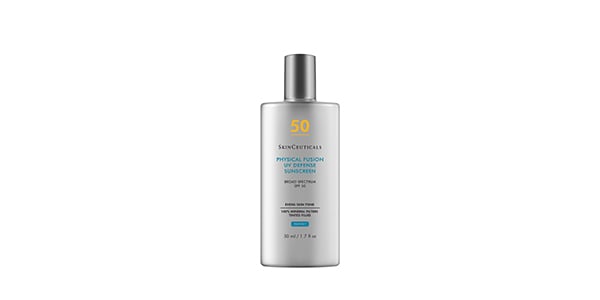
Dr. Camp is a fan of this fluid because it “offers SPF 50 protection in a tint that matches most skin tones.” In addition to zinc and iron oxides, it also contains artemia salina, a plankton extract that boosts protection against UV- and heat-induced stress. $35, skinceuticals.com
bareMinerals Complexion Rescue Tinted Moisturizer SPF 30
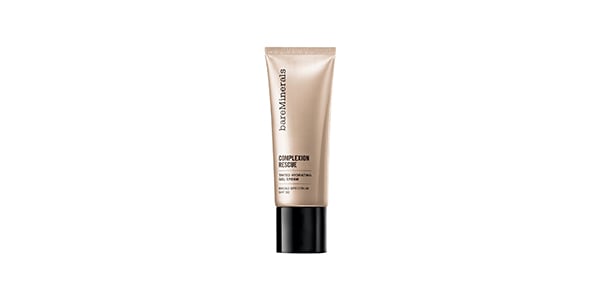
Part moisturizer, part sunscreen, part complexion perfector, we love this vegan tinted moisturizer because it’s the ultimate all-in-one. Available in 20 shades that offer sheer to light coverage, the gel-cream texture is suitable for all skin types. $33, bareminerals.com
La Roche Posay Anthelios Mineral Tinted Sunscreen For Face SPF 50
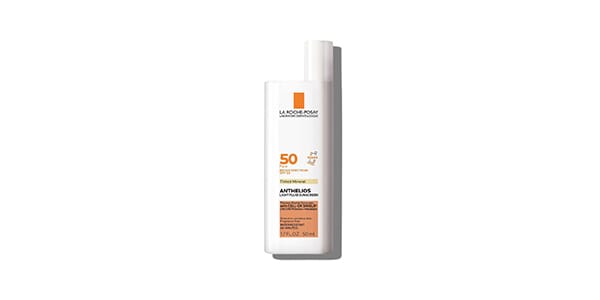
“Accessible with a light feel” is how Dr. Camp describes this quick-absorbing sunscreen that was developed with sensitive skin in mind. The tinted matte finish allows for a healthy (read: not shiny) glow, while the brand’s Cell-Ox Shield technology offers additional antioxidant protection. $34, laroche-posay.us
Dermablend Flawless Creator Lightweight Foundation
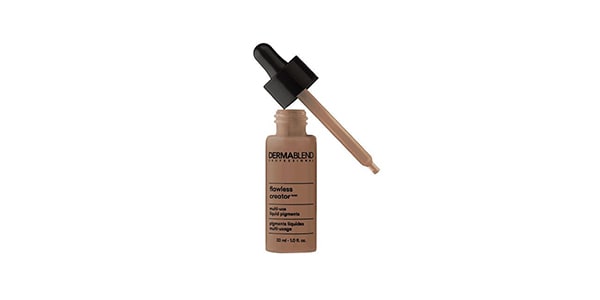
This highly pigmented, water- and oil-free foundation can be used alone, but it comes in a convenient dropper that can be, well, dropped into any product you please. Available in 22 shades, we’re fans of adding it to our favorite sheer sunscreens and moisturizers for a bit more coverage and wear time (it stays in place for up to 16 hours) than traditional tinted formulas. $40, dermablend.com
EltaMD UV Clear Tinted Broad-Spectrum SPF 46
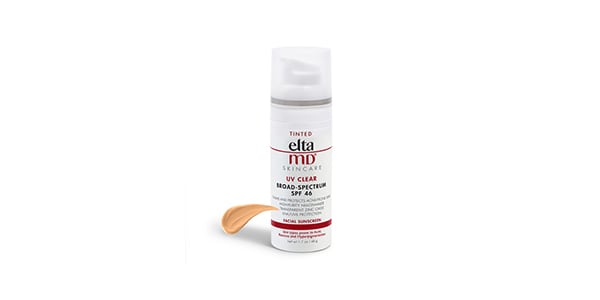
Ideal for acne-prone skin, Dr. Camp is a fan of this multitasking oil-free sunscreen. The formula calms and protects sensitive skin types that are susceptible to discoloration and breakouts thanks to a blend of soothing and brightening niacinamide, free radical-fighting antioxidants, and hydrating sodium hyaluronate. $39, dermstore.com
Supergoop CC Cream SPF 50
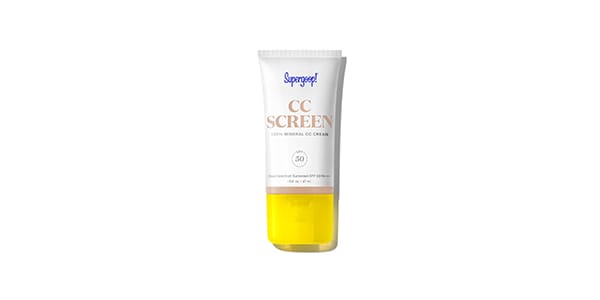
This skincare-sun care-makeup hybrid is just what the doctor ordered — literally. “For those who like options, this product comes in a rainbow of skin tones for the best match to your skin,” Dr. Camp says. Available in 15 shades, the 100 percent mineral formula features non-nano zinc oxide for UV protection and apple, Irish moss, and red seaweed extracts for smoothing, brightening, and free radical defense. $39, supergoop.com
All products featured are independently selected by our editors, however, AEDIT may receive a commission on items purchased through our links.
More Related Articles
Related Procedures

AI Plastic Surgeon™
powered by'Try on' aesthetic procedures and instantly visualize possible results with The AI Plastic Surgeon, our patented 3D aesthetic simulator.

